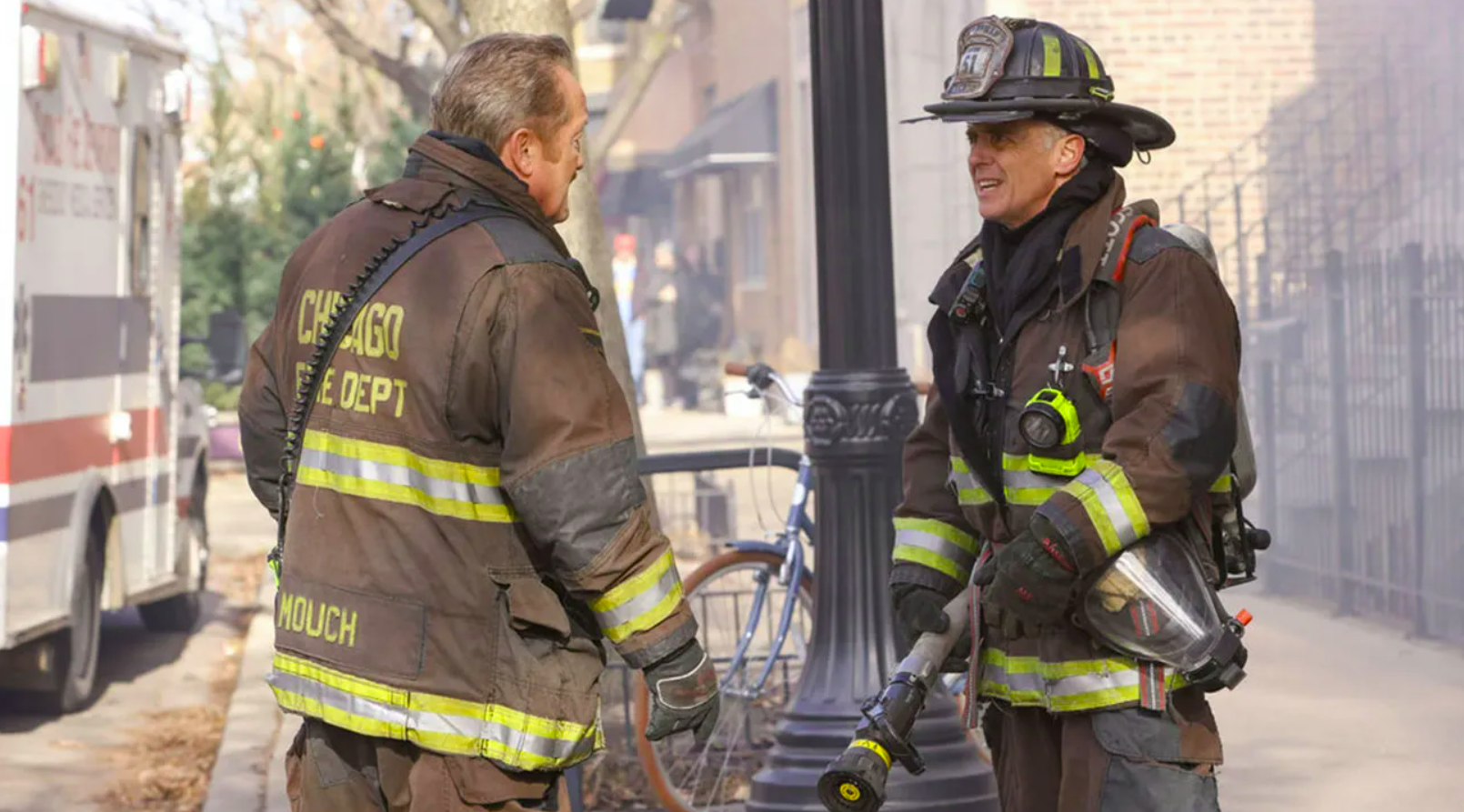
When Seconds Matter Most
In the relentless world of Chicago Fire, every second counts — but few calls tested Firehouse 51 like the rooftop rescue during a downtown high-rise blaze.
Smoke curled up into the city skyline as the squad rushed to the scene, heartbeats syncing with the deafening whir of sirens.
Upon arrival, Chief Boden quickly assessed the horror: dozens trapped on the upper floors, with the rooftop being their only escape route. It wasn’t just a fire anymore — it was a race against time, gravity, and despair.
Heroes in the Sky
Severide, Casey, and Kidd led the ascent, dragging heavy hoses and gear up endless stairwells slick with smoke and panic.
Above them, terrified tenants clustered near the ledge, their faces pale with fear as flames licked the lower floors.
When the aerial ladders couldn’t reach high enough, Severide made the call — they’d need to rappel down from a neighboring building’s rooftop.
It was a move fraught with risk, precision, and sheer bravery.
Scaling across dizzying heights, Severide anchored the ropes while Kidd and Cruz prepared the rigging. They moved like a seamless machine, each trusting the other with their lives — a bond forged in countless fires before.
Moments That Took Our Breath Away

The rescue scenes were cinematic: Kidd suspended mid-air, swinging through gusts of smoke, securing harnesses on shivering civilians.
Cruz shouted instructions over the roar of the fire, guiding people one by one to safety.
Meanwhile, Casey faced a heart-wrenching decision. A mother refused to leave without her injured child. With the clock ticking and the flames closing in, Casey grabbed both and rappelled down together — the ultimate act of defiance against death itself.
Below, Mouch and Herrmann worked tirelessly to triage the survivors, their own faces grimy but determined. Boden barked orders into his radio, refusing to lose even one life under his watch.
A Near-Tragedy
Just as it seemed everyone was safe, disaster struck. A gust of wind snapped a weakened section of scaffolding, sending debris crashing toward Severide.
In a split-second move, Cruz shoved him out of the way, taking a brutal hit to his side.
The world seemed to slow as the team scrambled to pull Cruz back to solid ground, blood staining his turnout gear.
Against all odds, he survived — bruised, battered, but alive. And as the sun broke through the smoke, Firehouse 51 stood together once more, a living testament to their unbreakable spirit.
Why the Rooftop Rescue Still Resonates
The rooftop rescue wasn’t just another action scene.
It captured the essence of Chicago Fire: courage under impossible odds, loyalty beyond reason, and the fierce will to save lives even when the world seemed determined to destroy them.
For viewers, it was a soaring reminder: true heroism doesn’t always come with a cape. Sometimes it’s wrapped in turnout gear, dangling hundreds of feet above the ground, refusing to let go.
